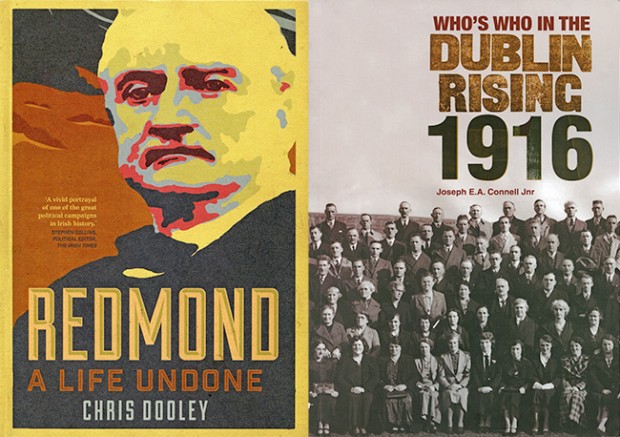1 February 2016 Edition
Redmond's triumph and decline and Heroes who struck against the Empire
Book Reviews

The author obviously has a deep sympathy with Redmond
Redmond – A life undone
By Chris Dooley. Gill & Macmillan
A COMMON INSULT amongst professional historians when disparaging new books is that the work is “journalistic”, rather than an historical analysis. This may also be considered as saying that something is readable rather than impenetrable doctoral theses rehashed for publication.
Chris Dooley’s book on John Redmond is certainly “journalistic”, but in the good way rather than the pejorative sense. This is a well-written and very readable book. It is not, as its title would lead you to believe, a biography of John Redmond but an account of the events of 1912-1918, encompassing Redmond’s triumph and decline as well as the rise and rise of Edward Carson. Bearing in mind the author’s pedigree as Foreign Editor of the Irish Times, and previously Deputy News Editor and Opinions Editor, this book is probably the ultimate in journalistic histiographies.
Although Redmond is the principal figure in this work, the book is about more than one individual. It is a narrative of a complex interaction of many people, differing attitudes and beliefs and the inexorable push of history.
The author obviously has a deep sympathy with Redmond, and the book, whilst not being an apologia, does seek to sympathetically explain every apparent mistake made by him. In the final analysis, however, it is very difficult to exonerate someone who “viewed with detestation and horror” the Easter Rising, and called for the “ringleaders to be dealt with in the most severe manner possible”. He did call for leniency to be shown to the rank and file, but more out of fear of further inflaming extreme nationalist sentiment rather than any moral or legal consideration.
Redmond’s real problem was that he had immersed himself exclusively in the realm of Westminster party politics. The arena in which he battled was an hermetically-sealed bubble that deprived him of any real knowledge of attitudes and opinions amongst the Irish public. His was not so much a fall from grace as an abandonment. He had become an irrelevance and was left standing by the roadside of history as new figures travelled towards a level of independence far beyond anything Redmond had ever sought.
There is an interesting little story towards the end of the book which describes how the now discredited and unpopular Redmond was recognised leaving Trinity College Dublin and beset by a hostile crowd. He was saved by taking refuge in the premises of the nearby Irish Times. Perhaps an Irish Times editor can now rescue Redmond’s reputation as a well-meaning but profoundly wrong political figure.
Who’s Who in the Dublin Rising: 1916
By Joseph E. A. Connell Jnr. Wordwell Books
IN STARK CONTRAST to the “journalistic” style of book, this is the ultimate forensically-researched, highly-detailed “proper” historical analysis. There are ten pages of appendices, 24 pages of detailed notes, and a 36-page bibliography!
The main body of the book is a comprehensive list of every participant (on the republican side) to take part in the Rising in Dublin. No mention is made of the (admittedly largely ineffectual) operations undertaken outside of the capital.
The book is divided into sections covering each battalion’s area and subdivided into individual garrisons. Individuals are listed according to their garrison, with a short biographical description against each name.
The book contains no narrative or analysis; it merely lists the combatants in a straightforward and unadorned manner with no unnecessary distractions from its primary function. Fundamentally, this is a resource book for authors and historians. It is, however, much more than that. It is also an absolutely fascinating read. What should be a sterile list of names and locations is somehow transformed into a celebration, an affirmation of the struggle undertaken by ordinary men and women who confronted the mighty British Empire. The more you read through the complements of the various garrisons, the more tangible the participants become. No longer abstractions but real people with real lives and histories of their own.
It is difficult to review a book which is basically a 300-page list but this is a work of painstaking research, meticulously recorded and presented as a wonderfully comprehensive record for future authors. It is also a wonderful testimony to the courage of a generation of ordinary people who sought to control their own destiny.
In this centenary year, this is one book which should definitely be added to everyone’s shortlist of potential book purchases.



